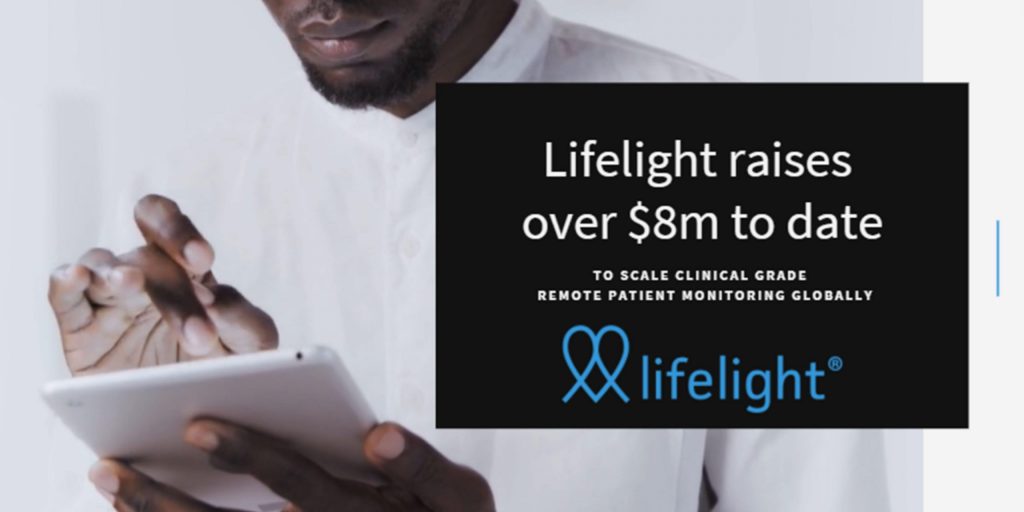
Lifelight is excited to announce we’ve raised over $8m to date to continue with our vision to turn every device on the planet into a self-monitoring healthcare platform.
Supported by NHS England from the beginning, Lifelight’s vision has also been shared by a number of key healthcare and industry stakeholders in the form of grants and equity funding, including a $1.5m grant from SBRI Healthcare, a prestigious NIHR & NHSX AI in Health Award and multiple grants and loans from Innovate UK.
Significantly $3.5m alone was raised in the last 14 months during the pandemic. Accelerated by Coronavirus, Lifelight is moving forward to play a key role, allowing clinicians to know a patient’s vital signs remotely, allowing accurate vitals measurements to continue to be taken in real-time with zero contact – critical during a pandemic. Equipping clinicians to effectively assess the physical condition of the patient for an improved outcome.
Clinically validated and regulatory approved, Lifelight delivers benefits across a wide range of use cases whether stand-alone or at scale. With its transformative ability to measure vital signs simply using the patient’s own smartphone, Lifelight removes the cost and complexity of hardware blood pressure cuffs and pulse oximeters. It is able to be embedded into existing healthcare platforms and pathways, allowing them to be more efficient, more effective and more scalable. More importantly it enables existing digital health pathways to be revisited, revised and reengineered.
In development for over 5 years, from its inception Lifelight has been based at the University of Southampton Business Park, joining the park’s Catalyst programme in 2015 with just 3 employees. The programme not only gave the business a home but the opportunity to learn from fellow entrepreneurs, both on the programme and around the Science Park. Lifelight also greatly benefitted by being part of the DigitalHealth.London Accelerator programme, championing digital innovation and helping us to better connect with the NHS and social care.
Since then, we’ve grown to a team of more than 40 people and conducted three clinical trials, giving the data to fuel our AI algorithms’ development and the Clinical Evaluation Report (CER) by which Lifelight is clinically validated – and are now working with telehealth organisations across multiple health sectors and geographies globally to embed Lifelight into their platforms – including Denmark’s largest pharmaceutical company Novo Nordisk.
Laurence Pearce, Lifelight’s CEO & founder said, “The next 12 months will be an exciting time in Lifelight’s journey, representing a number of firsts – but as we end the year we thought it was also important to remember how far we’ve come and thank our many supporters who share in our vision for Lifelight. As well as NHS England, NHSX and an army of study volunteers (thank you!), Portsmouth Hospitals University NHS Trust and Barts Health NHS Trust continue to support our clinical trials, led by Professor Anoop Chauhan MBE and Dr Manish Saxena respectively.
Laurence added, “The company is steadfast on our ethos of delivering solutions to market that adhere to clinical regulation, proven by validation, making Lifelight a unique solution not just across Europe but worldwide.
Laurence concluded, “Currently a CE Class I medical device, we’re working hard to deliver a CE Class II medical device and gain FDA clearance, allowing greater access to the US and beyond, driven by the need for accessible healthcare for all.”
Lifelight is a game-changing technology that allows a smartphone or tablet device to measure blood pressure, pulse, breathing rate, and oxygen saturations* simply by looking into the device’s built-in camera for 40 seconds. Completely contactless, with no additional hardware needed, it saves healthcare staff time while improving the patient experience. Lifelight is the only rPPG platform built to rigorous medical grade ISO 13485 and IEC 62304 standards. Lifelight has the potential to enable patient-taken remote observations, leading to safer, easier, and more effective remote triage and monitoring.








